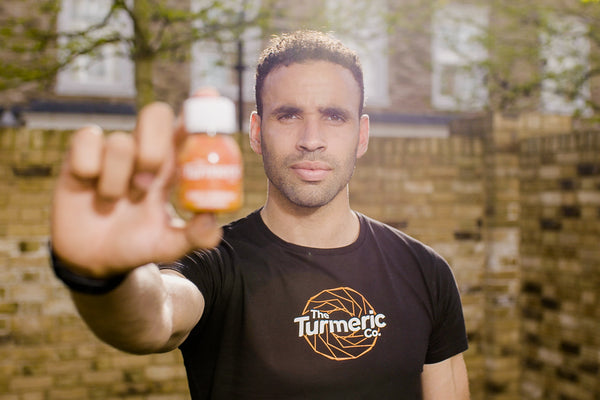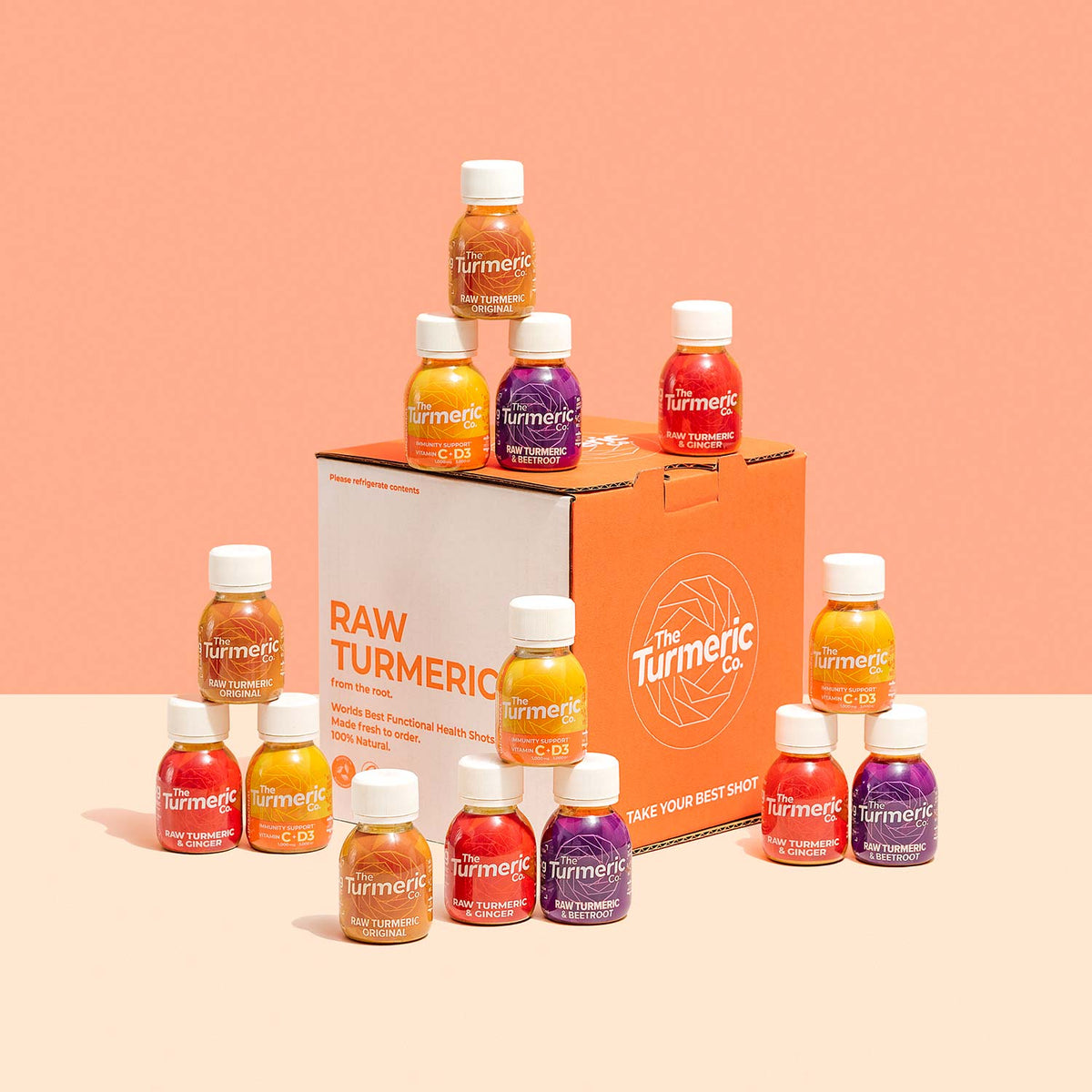What you Need to Know About Turmeric for Joints
Joint pain is a common complaint in the UK, with over 8.5 million people suffering from pain attributed to osteoarthritis alone and even more people experiencing acute joint pain from other causes, such as injury. But what are the causes of joint pain and is it true what they say about turmeric for joints? Whether you’re waking up with sore joints and muscles, or you’ve had a sudden onset of soreness – we’ve got the advice and information you need to get you on the road to feeling a little more comfortable.
What is Joint Pain?
Joint pain, also known as arthralgia, is pain or soreness that can be felt in any of the body’s joints. Depending on the cause, joint pain can be accompanied by heat and swelling. Some of the most common areas affected by joint pain include:
- Knees
- Shoulders/neck
- Hips
- Lower back
- Hands
What Causes Joint Pain?

Joint pain can often be difficult to diagnose as there are a number of different causes, all of which require different treatments and result in various outcomes. Many cases of joint pain resolve themselves with time and do not cause further issues. However, there are other causes which can trigger long-term problems. The most common reasons for joint pain include:
- Osteoarthritis
- Rheumatoid arthritis
- An infection within the body (such as flu)
- Fibromyalgia
- Gout
- Vitamin D deficiency
- Injury
- Intense exercise
- Menopause
Joint Pain After Exercise
Anyone who frequents the gym will have suffered from DOMS in their time, but it can also be common to feel joint pain after exercise – especially if you’ve gone a little too hard during a session.

This is because exercise, especially weight-bearing exercise, puts stress on the body. However, when too much stress is put on cartilage, joint pain and inflammation will ensue. This is especially common among those who increase their exercise intensity too quickly, but it’s important to rest the area until it’s feeling better to prevent further injury.
However, if your joint pain becomes a regular occurrence after exercise, or it does not improve with rest, then it might be worth speaking to your doctor in order to rule out any other causes, such as arthritis.
What is Good for Joint Pain?
If you’ve suddenly found yourself suffering from painful joints, whether it’s your knee, elbow or wrists, there are a few things which are good for joint pain that may help to alleviate some of the discomfort.
Give it The Cold Shoulder
If your joint pain occurred shortly after exercise and is accompanied by heat and swelling, then ice might be able to help reduce some of the inflammation and take away some of the pain.

Simply apply an ice pack for 20 minutes at a time every 2-4 hours for the first 24-48 hours after the onset of joint pain. However, for pain which lasts more than 48 hours, heat therapy should be used.
Rest and Relax
It goes without saying that you should rest the affected area if it’s swollen and painful, which means no more gym sessions that’ll work that particular joint until it has fully healed.
If you were looking for an excuse to put your feet up and get stuck into a new Netflix series, then acute joint pain is certainly a good one! When resting, try to elevate the painful joint to help to reduce some of the swelling in that area too.
Movement
Whilst rest is super-important for acute joint pain, it’s also incredibly important to keep the area moving to prevent stiffness and further pain – especially if the joint pain is chronic.
Low-impact exercise such as swimming, walking or cycling will help to keep the affected joint moving without placing too much strain on it, as well as strengthening the muscles around your joints. It’s important to stretch properly before exercise to prevent injury and ensure you’ve got a good range of motion in your joints before you start.

Aim for around 20 minutes of light exercise a day, but don’t push yourself if the joint is feeling worse during exercise – it’s all about listening to your body.
Over-the-Counter Medication
If you’re suffering from a flare-up or acute joint pain, then over-the-counter medication, such as nonsteroidal anti-inflammatory drugs may help to reduce the pain, swelling and inflammation which often accompanies joint pain.
Get Your Turmeric Fix
You’ll often hear about people who take turmeric for their joints. That’s because turmeric has been said to have anti-inflammatory properties (as well as other health benefits!), thanks to its compound curcumin.
By reducing inflammation and swelling around the affected joint, some of the pain may be alleviated. If you’d like to see if taking turmeric works for you, the best way to take turmeric is as part of a drink, such as a raw turmeric shot. It can take between 4-8 weeks to start noticing the proposed anti-inflammatory benefits, so it’s important to consume it consistently every day.
Whether you’ve had a sudden onset of joint pain, or you’ve been suffering from it for a while – our advice might help you to alleviate some of your swelling and pain to get you feeling more like yourself again. And if you’d like to reap the suggested benefits of turmeric, then treat yourself to one of our turmeric shot boxes to give yourself the best chance of recovery.

The Hal Robson-Kanu Guide To Fitness & Nutrition
Gain exclusive insight into habits that will make every day a healthy and fulfilling one.













